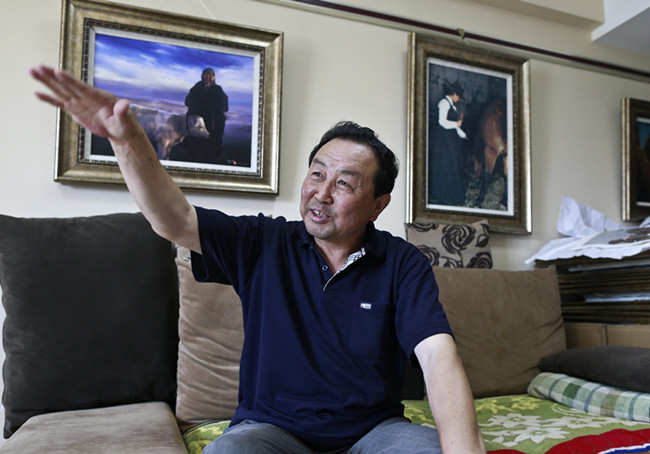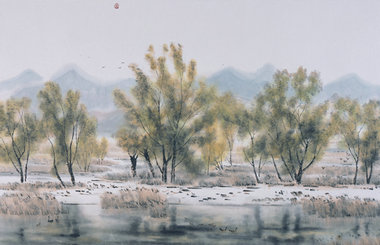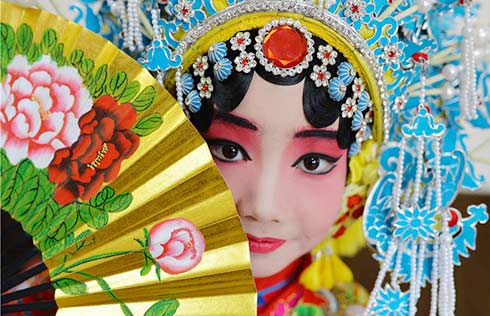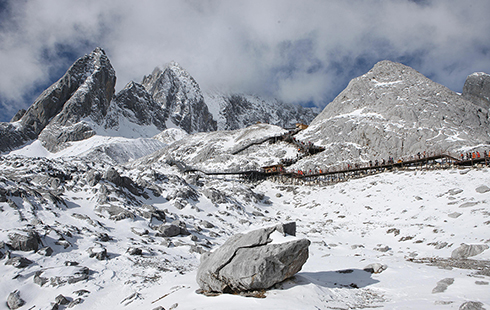Decades of change captured in images
By Xu Lin And Yuan Hui ( China Daily ) Updated: 2015-08-22 08:14:19
 |
|
Bao Yin uses black and white to highlight the cruelty of the desert. [Photo by Feng Yongbin/China Daily] |
When he traveled to Badanjilin desert in Erjina Banner, Alashan League, for the first time five years earlier, he says, he was attracted by the flourishing Euphrates poplars and took photos excitedly. However, as he walked into the forest, he was shocked by a vast tract of dead trees, with dried branches and leaves.
"As I photographed these dead poplars, I thought about those ancient warriors who died in battlefield but left their souls in the desert forever."
It is often said that Euphrates poplars can live for 1,000 years, he says, that even after they are dead they will stand for another 1,000 years.
For him it seemed the poplars were calling on people to save their homeland whose environment was being damaged.
So he decided to record these scenes and the sadness he felt about them in his pictures, visiting the desert every year and shooting several thousand photos.
In those early days getting from his home in Hohhot, the capital of the Inner Mongolia autonomous region, to Bayanhot town, Alashan League, heavy cameras and lenses in tow, was highly onerous. It required a seven-hour train trip, then an overnight stay, followed by two grueling days on buses. In those days, too, roads were made of gravel and dirt that often turned to mud, and sand storms in spring buried roads, forcing bus drivers to take long detours.
These days, it takes just four hours' drive from Bayanhot to the desert.
In the late 1980s, he took 20 rolls of film that cost him about nine months' salary and went on a three-day train trip to his hometown, Hulunbuir grassland, wanting to record local customs and practices, and herders' daily lives.
About a decade later, in 2000, Bao spent 40,000 yuan ($6,250) to publish a photo collection about the dead Euphrates poplar forests.
"I used black and white to highlight the cruelty of the desert and touch people's hearts," he says. "I hope it will encourage those who love nature to care about the environment wherever they are."
|
|
|
|
|
|
|
|

























 Raymond Zhou:
Raymond Zhou: Pauline D Loh:
Pauline D Loh: Hot Pot
Hot Pot Eco China
Eco China China Dream
China Dream China Face
China Face






